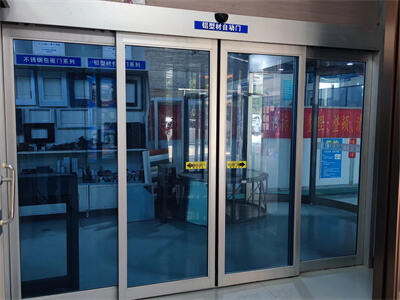Automatic doors will improve customer comfort and allow smooth operations in the current business world. Nevertheless, choosing an appropriate option becomes complicated because of the number of options available. A sensible judgement is imperative by carefully putting into consideration various major considerations.
1. Key Types of Automatic Doors and Their Applications
There are different designs of automatic doors, each applicable in definite conditions:
1.Sliding Doors: Suitable in areas where people gather in large numbers such as retail shops, supermarkets and hospitals. They allow a broad opening without needing much swing space allowing maximum usable area.
2. Swinging Doors: These can be seen in areas that do not require high traffic like office corridors, and bathroom doors. They provide a general operation (automated opening / closing) and are, usually, cost-efficient.
3.Revolving doors: These are generally found in hotels, corporate lobbies and buildings that value having a climate as well as energy saving. They control traffic of people on stairs, reduce the draft, and are able to add beauty to an entrance.
2. Core Selection Factors: Space, Traffic, and Security
The main criteria when selecting the best automatic door system should be based on:
● Available Space: The type of door will influence a lot of spaces needed. Sliding doors suit well in places where there is minimal lateral room, and the swinging doors require ample lateral distance to cover the space. Revolving doors are the most space demanding but perform well when it comes to handling certain environmental requirements.
● The volume of foot traffic through the doors: pair the type of door with how it will be used. During high traffic entrances, sliding and revolving doors are effective. Low to moderately busy traffic zones such as the interior corridors can be girded with swinging doors.
● Security Demands: The most important thing when it comes to facilities such as banks and data centers is security. Look at doors that have been constructed using hardy materials, and where the doors are fitted with access controls (keypads, card readers), and have state of the art locking systems based on your risk profile.
3. Additional Considerations: Customization and Maintenance
Beyond the core factors, also weigh:
● Customization and Brand Identity: Many options of customization are available through automatic doors. The door system can accommodate business colours, logos and even finish (special laminate, special glass finish). This does not only increase aesthetics but also strengthens brand awareness at the entrance level.
● Maintenance Requirements: As a key component of high performance, safety and long life the requirement of regular maintenance is critical. Depending on the system, needs may be different:
○ Sliding doors should be actively maintained as regards to tracks, sensors and rollers.
○ Swinging doors should be checked on hinges as well as operators and safety sensors.
○ Revolving doors require specialist maintenance and repair of their rotating machinery and of seals.
Pick a vendor who does quality servicing and maintenance contracts.
4. Integration with Smart Building Systems
The automatic doors of the modern age can be easily connected with the intelligent building management systems (BMS). The good news about this connectivity is that it has a lot of advantages:
● Improved Energy efficiency: Doors are able to liaise with HVAC systems and prevent a significant air exchange when the doors are not in use.
● Better Security: Integration will enable access points to be controlled and monitored in a centralized mode.
● Increased Operational Visibility: The capability of remote monitoring will deliver information on usage patterns and possible failures, which will be of great value in large facilities.

